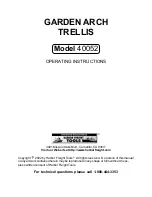
Nitrocellulose membranes have been used extensively for protein binding and detec-
tion.
7,19-22
They can easily be stained for total protein by a dye stain (Amido Black, Coomassie
®
blue, Ponceau S, Fast Green FCF, etc.
22
), or the more sensitive Colloidal Gold Total Protein
Stain, and also allow either RIA, FIA, or EIA.
7
Nitrocellulose has a high binding capacity of
80–100 µg/cm
2
. Nonspecific protein binding sites are easily and rapidly blocked, avoiding
subsequent background problems. Low molecular weight proteins (esp. < 20,000 daltons)
may be lost during post transfer washes, thus limiting detection sensitivity.
21
However, use of
glutaraldehyde fixation and a smaller pore size nitrocellulose membrane (0.2 µm) have been
shown to be effective in eliminating this loss.
22
Large proteins (>100,000 daltons) denatured
by SDS may transfer poorly with the addition of alcohol to the transfer buffer. Alcohol increases
binding of SDS-proteins to nitrocellulose, but decreases pore sizes in the gel. Elimination of
alcohol from SDS-protein transfers also results in considerably diminished binding to
nitrocellulose. Under high field strengths of the Trans-Blot cell, proteins may be transferred
through nitrocellulose without binding.The efficiency of binding can be increased by
employing a smaller pore size nitrocellulose.
23
Zeta-Probe positively charged nylon membrane allows binding of SDS-protein
complexes in the absence of alcohol.
24,25
This membrane binds proteins very tightly and is
stable to post transfer washes. The binding capacity of Zeta-Probe membrane is ~480 µg/cm
2
.
Reprobing, after stripping of prior probes, may be performed without significant loss of
primary bound protein. Even small proteins appear to bind stably. Zeta-Probe membrane
cannot be dye-stained, as destaining is impossible. Instead, the Biotin-Blot Total Protein Stain
should be used on Zeta-Probe membrane. This assay uses NHS-Biotin (N-hydroxysuccin-
imide-biotinate) to biotinylate all the proteins on the membrane surface, and a combination of
an avidin-horseradish peroxidase or avidin-alkaline phosphatase and a color development
reagent to detect these biotinylated proteins.
26,27
The large capacity for molecules (480 µg/cm
2
)
allows sensitive detection of small amounts of proteins in a complex mixture. This high
capacity requires more stringent blocking conditions than nitrocellulose.
25
Zeta-Probe
membranes can be effectively and economically blocked using a 5% solution of BLOTTO
(non-fat dry milk)
3,18,28
Section 8
Troubleshooting Guide
8.1 Poor Transfer
A. Molecules remain in the gel matrix (as detected by Coomassie blue or
silver staining the gel)
1. Transfer time is too short. Increase time of transfer.
2. Charge to mass ratio is incorrect. Proteins near their isoelectric point at the pH of the
buffer will transfer poorly. Try a more basic or acidic transfer buffer to increase protein
mobility.
3. Filter paper is too dry; insufficient buffer soaking the filter paper. Buffer is depleted early
in the transfer. The filter paper should be fully saturated with buffer prior to transfer.
Increase the number of sheets of filter paper, or use thicker filter paper.
4. Power supply circuit tripped. Check the fuse.
5. Gel percentage is too high. Reduce %T (total monomer) or %C (crosslinker). A 5% C
(with bis as the crosslinker) will produce the smallest pore size gel. Decreasing from this
concentration will increase pore size and increase transfer efficiency.
13




































